Explore the evolving landscape of the beer industry with our comprehensive beer trends analysis. In 2023, the beer market continues to witness significant shifts, driven by changing consumer preferences, innovative brewing techniques, and a growing emphasis on sustainability. This article delves into the current trends shaping the beer market, examining how factors such as consumer behavior, regional differences, and technological advancements are influencing the industry. From the rise of craft beers to the adoption of eco-friendly practices, we uncover what’s trending and what lies ahead for the global beer market.
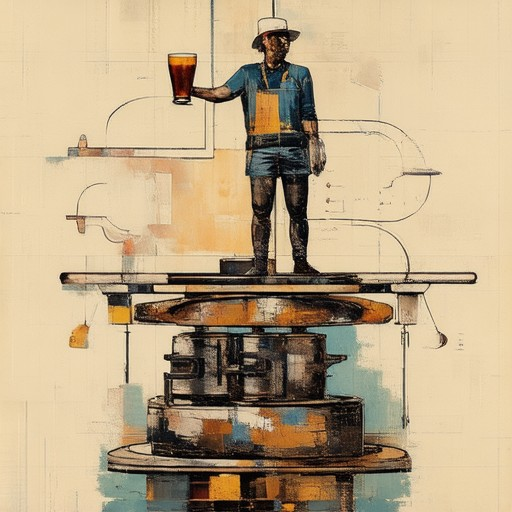
What Are the Current Trends Shaping the Beer Market in 2023?
The beer market in 2023 is experiencing several notable shifts driven by evolving consumer preferences, technological advancements, and changing regulatory environments. Here are the key trends influencing the industry:
- Rise of Craft Beer and Small-Batch Production
Craft beer continues to dominate the market, with many consumers seeking unique flavors and high-quality ingredients. Breweries are increasingly experimenting with non-traditional ingredients like fruit, herbs, and spices to create innovative beer profiles. This trend is further supported by the growing popularity of seltzers and session IPAs. - Sustainability and Eco-Friendly Practices
There is a rising emphasis on sustainability among brewers. Many companies are adopting eco-friendly practices such as reducing water usage, minimizing carbon footprint, and using recyclable packaging materials. Consumers are also increasingly drawn to brands that prioritize environmental responsibility. - Health-Conscious Brewing
With a growing focus on wellness, there is a surge in demand for low-calorie, low-sugar, and gluten-free beers. Brewers are responding by developing products that cater to specific dietary needs while maintaining great taste. - Globalization and Cross-Cultural Influences
The beer market is becoming more globalized, with international flavors and brewing techniques gaining popularity. Collaborations between brewers from different regions are leading to unique hybrid styles that blend traditional and modern approaches. - Premiumization and Artisanal Quality
Consumers are willing to pay more for premium and artisanal beers that offer exceptional flavor and craftsmanship. This trend is driving innovation in brewing techniques and the use of high-quality ingredients. - Digital Transformation
The beer industry is embracing digital tools to enhance customer engagement. From virtual tastings to e-commerce platforms, brewers are leveraging technology to connect with consumers in new ways. - Cultural and Seasonal Celebrations
Beer is increasingly tied to cultural and seasonal events. Limited-edition releases tied to holidays, festivals, and regional traditions are becoming popular among consumers looking for something special. - Competitive Landscape
The competitive nature of the beer market is driving competition among both established players and emerging craft breweries. Companies like Dogfish Head, New Belgium, and Sierra Nevada continue to innovate while smaller breweries focus on niche markets.
These trends reflect the dynamic nature of the beer industry in 2023, with a strong emphasis on quality, sustainability, and consumer-centric innovation.
The Key Trends Driving the Evolution of the Beer Industry
1. **Sustainability and Eco-Friendly Practices** The beer industry is increasingly embracing sustainable practices to reduce its environmental impact. Many breweries are adopting energy-efficient technologies, water conservation methods, and biodegradable packaging solutions to align with consumer demand for environmentally responsible products.
2. **Innovation in Flavor Profiles** Craft breweries are pushing boundaries with innovative flavor profiles, incorporating unconventional ingredients like fruit, coffee, and barrel-aged spirits. This trend is driven by consumers seeking unique and adventurous tasting experiences.
3. **Rise of Non-Traditional Beer Categories** Beyond traditional lagers and ales, new categories like hard seltzers, low-alcohol beers, and flavored malt beverages are gaining popularity. These offerings cater to diverse consumer preferences, including health-conscious individuals and casual drinkers.
4. **Globalization and Cultural Adaptation** The global beer market is expanding, with international lagers and IPAs gaining traction in emerging markets like Asia and Africa. This trend reflects changing consumer tastes and the ability of breweries to adapt to local cultures while maintaining global appeal.
5. **Technological Advancements** Modern breweries are leveraging advanced brewing techniques, automation, and data analytics to enhance productivity and product quality. These technological innovations are helping smaller breweries compete with larger players.
6. **Shift Toward Premium and Artisanal Products** Consumers are increasingly willing to pay a premium for high-quality, artisanal beers produced by small, independent breweries. This trend has fueled the growth of the craft beer market and supported the emphasis on local and regional production.
For more details on these trends and to explore the latest developments in the craft beer scene, visit The Goods On Tap . Our platform provides in-depth insights into brewery operations, industry trends, and beer styles, making it a valuable resource for beer enthusiasts and professionals alike.

Latest Trends Influencing the Global Beer Market
The global beer market is undergoing significant transformations, driven by evolving consumer preferences, technological advancements, and shifting regulatory environments. Here are the key trends shaping the industry:
- Rise of Craft Beer and Small-Batch Production
Craft beer continues to dominate the market, with small-batch production gaining popularity. Consumers are increasingly drawn to unique flavors, innovative brewing techniques, and artisanal craftsmanship. Brewers are experimenting with unconventional ingredients, barrel-aged beers, and fruit-infused varieties to differentiate themselves. - Growing Demand for Plant-Based and Alternative Beverages
Health-conscious consumers are driving demand for non-traditional beverages like hard seltzers, vegan beers, and flavored sparkling waters. Brands are investing in innovative production methods to cater to these preferences, often incorporating ingredients like rice, oats, and agave to create lighter, low-calorie options. - Sustainability and Ethical Brewing Practices
Environmental concerns are prompting breweries to adopt sustainable practices. Many are reducing water usage, minimizing carbon footprints, and utilizing renewable energy sources. Some are even experimenting with carbon capture technologies to offset their emissions. - Regional and Cultural Influences
Localized trends are playing a significant role in shaping the global market. For instance, Japan’s interest in umami-rich beers is influencing flavor profiles, while Germany’s tradition of Oktoberfest continues to drive demand for marzenbier. Emerging markets in Africa and Asia are also contributing to growth through indigenous beer styles. - Technological Advancements in Brewing
Artificial intelligence and machine learning are being integrated into brewing processes to optimize yield, reduce waste, and enhance flavor consistency. These technologies are also enabling faster product innovation, allowing brewers to quickly test and release new recipes. - E-commerce and Direct-to-Consumer Models
Online sales channels are becoming increasingly popular, particularly among younger consumers. Brands are leveraging digital platforms to reach niche audiences and offer personalized experiences, such as subscription services and curated beer boxes. - Globalization and Cross-Border Collaborations
International mergers and acquisitions are reshaping the industry landscape. Companies are forming partnerships to access new markets and tap into local expertise. This trend is expected to accelerate as global beer consumption continues to rise. - Focus on Brand Storytelling and Authenticity
Consumers are placing greater emphasis on brand transparency and authenticity. Breweries are investing in storytelling initiatives that highlight their history, values, and commitment to quality. This approach is helping to build stronger connections with customers and fostering loyalty. - Resurgence of Traditional Beer Styles
While craft beer remains dominant, traditional beer styles like lagers, ales, and stouts are experiencing a resurgence. Brewers are revisiting classic recipes and pairing them with modern techniques to appeal to both old-school and new-generation drinkers. - Partnerships with Food and Beverage Industry
Collaborations between breweries and chefs, distilleries, and winemakers are creating unique hybrid beverages. These cross-category partnerships are expanding the beer market beyond its traditional boundaries and introducing new consumer segments.
The global beer market is dynamic, with trends influenced by cultural shifts, technological progress, and changing consumer behaviors. Staying ahead requires constant innovation and a deep understanding of regional and global preferences. By embracing sustainability, investing in technology, and focusing on customer-centric approaches, the industry is poised for continued growth and evolution.
For more detailed insights into the global beer market, explore The Goods On Tap and discover the latest trends, reviews, and expert analyses.

The Most Impactful Trends Shaping the Future of the Beer Industry
1. **Sustainability and Eco-Friendly Practices**
- Breweries are adopting renewable energy sources like solar and wind power to reduce carbon emissions.
- Many companies are now using recyclable and biodegradable packaging materials.
- Water conservation initiatives are becoming standard practice to combat resource scarcity.
- Some breweries are experimenting with vertical farming to grow ingredients locally.
2. **Innovation in Brewing Techniques**
- AI-driven fermentation monitoring systems are optimizing yeast performance and reducing waste.
- Gene-editing technology is being used to create unique flavor profiles and faster fermentation times.
- Cold fermentation and wild yeast experiments are leading to more complex and nuanced beer flavors.
- Advanced filtration technologies are allowing brewers to create clearer and smoother beers.
3. **Shift Toward Craft and Premium Beers**
- Consumer demand for artisanal and small-batch beers is increasing rapidly.
- Premium and super-premium beer categories are growing faster than mainstream beers.
- Health-conscious consumers are driving interest in low-calorie, low-carb, and gluten-free beer options.
- Subscription-based beer clubs and curated tasting boxes are gaining popularity.
4. **Digital Transformation in Distribution**
- E-commerce platforms are becoming key channels for beer sales, especially during COVID-19 and beyond.
- Beer delivery apps and subscription services are disrupting traditional distribution methods.
- Blockchain technology is being tested for tracking beer shipments and ensuring authenticity.
- Virtual tastings and online events are helping breweries engage with customers remotely.
5. **Globalization and Cross-Cultural Influences**
- Craft beer is making significant inroads in developing markets like India, China, and Africa.
- International collaborations between brewers are fostering innovation and market expansion.
- Cultural fusion in beer creation, such as Japanese-inspired rice beers and Mexican-style lagers, is gaining traction.
- Brewers are investing in education programs to train local workers in advanced brewing techniques.
6. **Focus on Brand Storytelling and Community Building**
- Breweries are leveraging storytelling to connect with consumers through social media and packaging design.
- Community-focused events like taproom gatherings and charity fundraisers are boosting brand loyalty.
- Partnerships with local artists, musicians, and chefs are creating unique brand experiences.
- Transparency initiatives, such as sharing ingredient sourcing and production processes, are resonating with consumers.
For more detailed insights into these trends and to explore the latest developments in the craft beer scene, visit The Goods On Tap .
Latest Trends Impacting the Global Beer Industry
The global beer industry is undergoing significant transformations, driven by evolving consumer preferences, technological advancements, and shifting regulatory environments. Here are the key trends shaping the sector:
1. Shift Toward Sustainable Practices
The beer industry is increasingly adopting sustainable practices to reduce its environmental footprint. Many breweries are implementing energy-efficient technologies, water conservation measures, and waste reduction programs. Additionally, there is a growing emphasis on locally-sourced ingredients to minimize carbon emissions associated with transportation.
2. Rise of Plant-Based and Alternative Ingredients
In response to changing dietary preferences, breweries are experimenting with alternative ingredients such as barley, wheat, and rye. There is also a surge in interest for non-traditional beers made from fruits, vegetables, and even cannabis-derived products. These innovations cater to health-conscious consumers seeking gluten-free or low-carb options.
3. Growth of Craft Beer and Small-Batch Production
The craft beer market continues to thrive, with small-batch production becoming a hallmark of innovation. Brewers are focusing on unique flavor profiles, experimental brewing techniques, and limited-edition releases to differentiate themselves in a competitive market. This trend has led to the rise of microbreweries and nanobreweries.
4. Increased Demand for Functional and Specialty Beers
Consumers are increasingly seeking beers with functional benefits, such as those containing vitamins, minerals, or probiotics. There is also a growing demand for beers tailored to specific dietary needs, such as vegan or keto-friendly options. Specialty beers, including barrel-aged stouts and sour ales, are gaining popularity due to their distinct flavors and culinary appeal.
5. Digital Transformation in Marketing and Distribution
The beer industry is embracing digital tools to enhance customer engagement and streamline distribution. Social media platforms, e-commerce channels, and subscription services are becoming integral to brand promotion and sales. Virtual tastings and online ordering options are reshaping traditional distribution models, making it easier for consumers to access craft beers.
6. Regulatory Changes and Market Expansion
Recent changes in alcohol regulations have opened new markets for brewers, particularly in regions with previously restrictive policies. Governments are also mandating clearer labeling for calorie content and alcohol percentage, which is influencing consumer purchasing decisions. Additionally, international trade agreements are facilitating cross-border collaborations and expansions.
7. Collaborations Between Breweries and Chefs
There is a rising trend of partnerships between breweries and chefs to create innovative beer-flavored dishes and ingredient pairings. These collaborations are enhancing the culinary experience while introducing broader audiences to craft beers.
For more detailed insights into these trends and their implications for the global beer industry, visit The Goods On Tap to explore comprehensive analyses and resources.
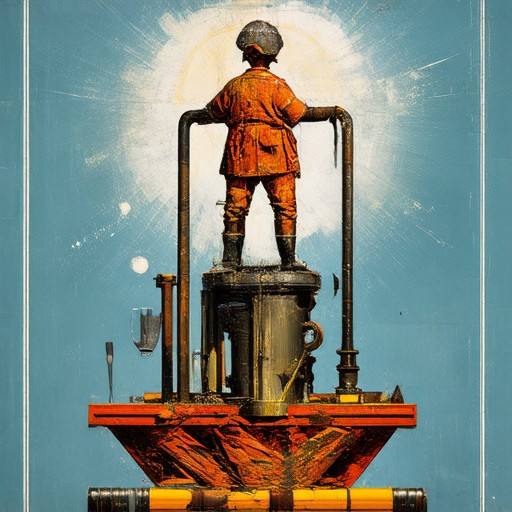
How Are Current Beer Trends Influencing the Future of the Industry?
The craft beer revolution continues to reshape the beverage landscape, driving innovation and consumer demand. Here’s an exploration of current beer trends and their potential impact on the industry:
Craft Beer Innovation
Craft breweries are pushing boundaries with unique flavor profiles and experimental brewing techniques. From barrel-aged stouts to hop-forward IPAs, small-scale producers are redefining traditional beer categories. The rise of regional styles, such as West Coast IPAs and sour beers, has expanded consumer preferences, fostering diversity in the market.
Sustainability Practices
Environmental consciousness is becoming a cornerstone of the beer industry. Brewers are adopting eco-friendly practices, such as water conservation, renewable energy usage, and packaging innovations. Brands emphasizing sustainability are gaining traction among environmentally aware consumers, prompting larger breweries to adopt similarly responsible practices to remain competitive.
Technological Integration
Modern breweries are leveraging advanced technologies to enhance efficiency and product quality. Automated bottling lines, precise fermentation control, and AI-driven sensory analysis tools are transforming production processes. These innovations allow brewers to maintain consistency while experimenting with new recipes and scaling operations effectively.
Consumer Preferences Shift
Today’s beer drinkers favor flavors that reflect a blend of tradition and innovation. Health-conscious consumers are seeking low-calorie, gluten-free, and organic options. Meanwhile, there’s a growing demand for sessionable beers and flavored varieties, such as fruit-infused radlers and session IPAs, catering to diverse tastes.
Globalization and Localization
The industry is balancing global expansion with a focus on local production. International markets present opportunities for established brands to grow, while local breweries thrive by offering regionally tailored products. Cross-border collaborations and partnerships are fostering cultural exchange, enriching the global beer landscape.
Conclusion
The future of the beer industry looks promising, driven by innovation, sustainability, and evolving consumer preferences. As the sector continues to evolve, staying attuned to emerging trends will be essential for brewers aiming to lead in this dynamic market. Explore more insights and resources on The Goods On Tap to discover how these trends are shaping the industry’s trajectory.

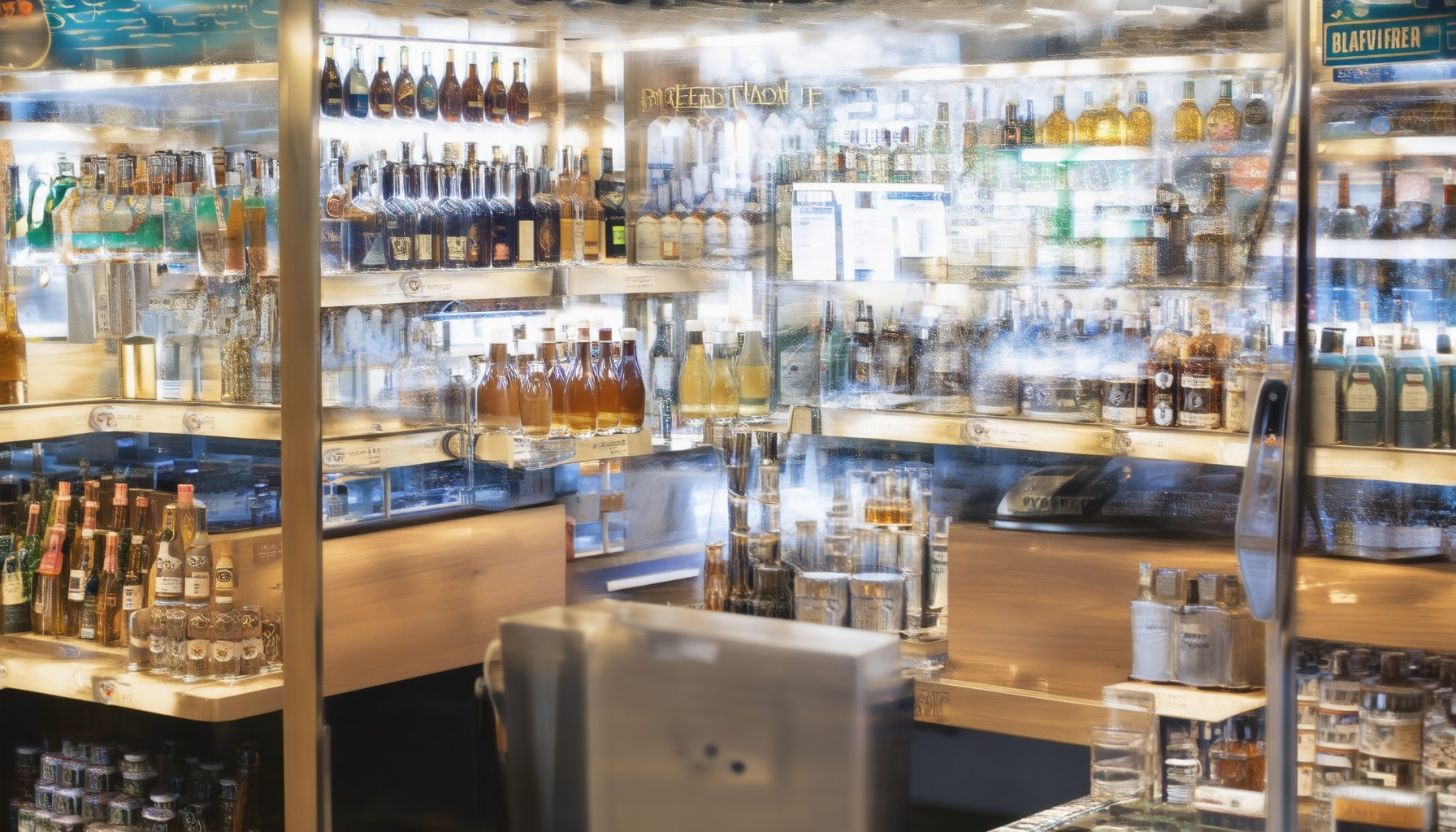

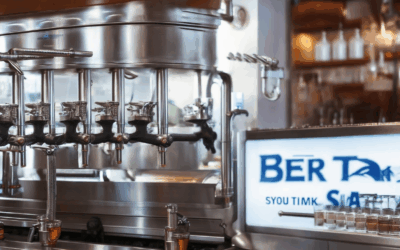
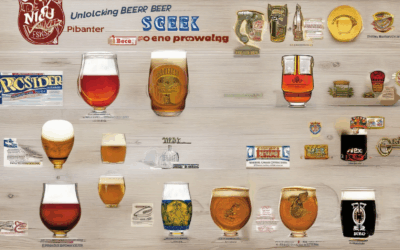
0 Comments